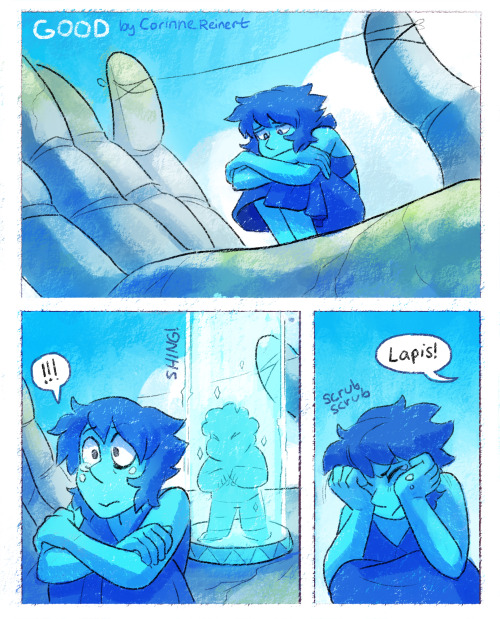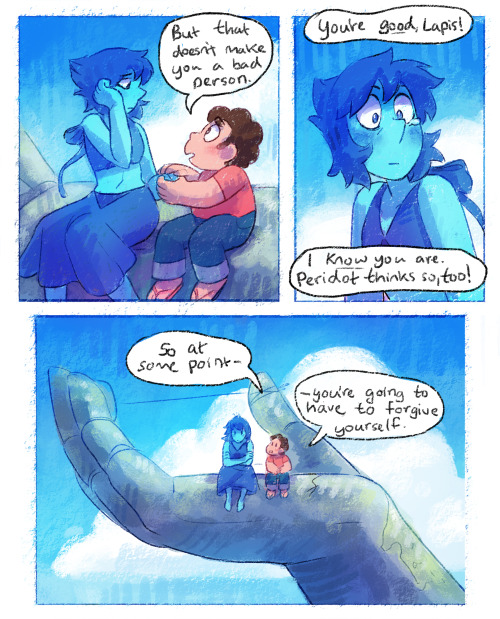A Tribute To Every Brave Men And Women Who Rise Their Lives For Our Free Country.
A tribute to every brave men and women who rise their lives for our free country.










RIP to all the Men and Women who gave their lives for us to be able to be “Free”
More Posts from Aliensteel23 and Others
Amazing.
The Moon Just Photobombed NASA’s Solar Dynamics Observatory
On May 25, 2017, the moon photobombed one of our sun-watching satellites by passing directly between the satellite and the sun.

The Solar Dynamics Observatory, or SDO, orbits Earth and watches the sun nearly 24/7 — except when another body, like the moon, gets in the way. These lunar photobombs are called transits, the generic term for when any celestial body passes in front of another.
Transits are one way we detect distant worlds. When a planet in another star system passes in front of its host star, it blocks some of the star’s light so the star appears slightly dimmer. By monitoring changes in a star’s light over time, scientists can deduce the presence of a planet, and even determine what its atmosphere is like. This method has been used to discover thousands of planets, including the TRAPPIST-1 planets.

SDO sees lunar transits about twice a year, and this one lasted about an hour with the moon covering about 89 percent of the sun at the peak of its journey across the sun’s face.
When they’re seen from Earth, we call lunar transits by another name: eclipses.

Solar eclipses are just a special kind of transit where the moon blocks all or part of our view of the sun. Since SDO’s view of the sun was only partially blocked, it saw a partial eclipse. Later this year, on Aug. 21, a total eclipse will be observable from the ground: The moon will completely block the sun’s face in some parts of the US, creating a total solar eclipse on a 70-mile-wide stretch of land, called the path of totality, that runs from Oregon to South Carolina.
Throughout the rest of North America — and even in parts of South America, Africa, Europe and Asia — the moon will partially obscure the sun, creating a partial eclipse. SDO will also witness this partial eclipse.

Total solar eclipses are incredible, cosmic coincidences: The sun is about 400 times wider than the moon, but it also happens to be 400 times farther away, so the sun and moon appear to be the same size in our sky. This allows the moon to completely block the sun when they line up just right.

Within the path of totality, the moon completely obscures the sun’s bright face, revealing the comparatively faint corona — the sun’s pearly-white outer atmosphere.

It’s essential to observe eye safety during an eclipse. You must use proper eclipse glasses or an indirect viewing method when any part of the sun’s surface is exposed, whether during the partial phases of an eclipse, or just on a regular day. If you’re in the path of totality, you may look at the eclipse ONLY during the brief moments of totality.

A total solar eclipse is one of nature’s most awe-inspiring sights, so make your plans now for August 21! You’ll also be able to see the eclipse cross the country that day through the eyes of NASA – including views of the partial eclipse from SDO – on NASA TV and at nasa.gov.
Learn more about the August eclipse — including where, when, and how to safely see it — at eclipse2017.nasa.gov and follow along on Twitter @NASASun.
Now I've seen everything
Solar System: Things to Know This Week
Making every night science movie night with these amazing videos.

1. Pure Beauty
Our star sprouting coronal loops courtesy of the NASA sun team. See the full video: https://go.nasa.gov/2p47Lt2

2. Where’s the last place you’d expect to find enough ice to bury a city?
Answer: Mercury, the closest planet to the sun. Watch the video: https://svs.gsfc.nasa.gov/11184

3. The Mars Fleet
Only Earth has more satellites studying it. Full video: https://svs.gsfc.nasa.gov/4414

4. A Star-Studded Cast
Check out NASA’s satellite fleet of Earth observers. See the video: https://svs.gsfc.nasa.gov/12586

5. Jupiter in Ultra HD
Thanks, Hubble Space Telescope! See the video: https://svs.gsfc.nasa.gov/12021

6. A Tear Jerker
Our Cassini spacecraft starts her 4.5-month Grand Finale this week. Full video: https://saturn.jpl.nasa.gov/resources/7628

7. Faster Than the Speed of Sound
Winds on Neptune travel faster than the speed of sound. Full video: https://svs.gsfc.nasa.gov/11349

8. A Musical Number
This one features the planet Uranus doing pop and lock. Full video: https://youtu.be/CWuWoiHmXUs

9. Up Close and Personal
Thanks to our New Horizons mission, we’ve been able to get up close and with Pluto. Full video: https://svs.gsfc.nasa.gov/12080

10: The Treasure Trove
TRAPPIST-1 is a treasure trove of seven Earth-sized planets orbiting a distant star. Full video: https://www.jpl.nasa.gov/video/details.php?id=1459
Discover more lists of 10 things to know about our solar system HERE.
Make sure to follow us on Tumblr for your regular dose of space: http://nasa.tumblr.com
😥Poor Scrooge
Once again this episode is making me even more sad when i do these things.

Scrooge is still fuming after the argument on the plane with everyone.
Mrs. Beakley and Webby are leaving the manor with packed bags and uncertainty if they’ll come back. With Scrooge barely batting an eye and dismissing them quickly.

Webby is clearly still hurt after what Scrooge had said to her

“Well you’ve successfully pushed your family and everyone who cared about you away, Again. I hope your happy”. Dang, You can just hear the venom in her voice in that comment.

This freaking shot of duckworth leaving as well actually made me gasp in shock. I kinda forgot he was there but knowing that he was leaving to was heartbreaking.
Then we see Scrooge grab a key and go into a room which seems to be locked up for a long time due to the dust and the chair being covering up.


The realization slowly coming onto his face as he just sits there, contemplating the events. It quickly goes to mad then regret. (God this show is torturing me.)


Then we see that he did do what everyone thought he didn’t. He built more spaceships, he sent astronauts into space to look for her, with them never finding her ship or even losing the rescue ships in the process.
It was to the point of spending almost all of his money from his own bin to fund it and keep it going. But it got too expensive to the point where he was forced to shut it down completely, with Scrooge feeling like he failed to protect Della and try to bring her home and became truly alone in the process.


“I AM”
That line broke the dam whatever I was trying to hold in and had me silently sobbing as the credits rolled.
The way that line was acted, the gruff exterior of his stubbornness and his mind being made up and yet his voice sounds close to breaking as tears roll down his cheeks.
David Tennant…..it’s now the 2nd time this man has made me cry when I watch a show with him in it.
This Finale is gonna be amazing, but we all know we’re gonna be on the floor once it’s over.
Another Earth? Or another home?
We Just Identified More Than 200 New (Potential) Planets
The Kepler space telescope is our first mission capable of identifying Earth-size planets around other stars. On Monday, June 19, 2017, scientists from many countries gathered at our Ames Research Center to talk about the latest results from the spacecraft, which include the identification of more than 200 potential new worlds! Here’s what you need to know:
We found 219 new planet candidates.

All of these worlds were found in a patch of sky near the Cygnus constellation in our Milky Way galaxy. Between 2009 and 2013, Kepler searched more than 200,000 stars in the region for orbiting planets. The 219 new planet candidates are part of the more than 4,000 planet candidates and 2,300 confirmed planets Kepler has identified to date.
Ten of these worlds are like our own.

Out of the 219 new planet candidates, 10 are similar to Earth. The planets are about the right size to be a terrestrial world, and orbit their star in the habitable zone–the range of distances from a star where liquid water could pool on the surface of a rocky planet.
Small planets come in two sizes.

Kepler has opened up our eyes to the existence of many small worlds. It turns out a lot of these planets are either approximately 1.5 times the size of Earth or just smaller than Neptune. The cool names given to planets of these sizes? Super Earths and mini-Neptunes.
Some of the new planets could be habitable.

Water is a key ingredient to life as we know it. Many of the new planet candidates are likely to have small rocky cores enveloped by a thick atmosphere of hydrogen and helium, and some are thought to be ocean worlds. That doesn’t necessarily mean the oceans of these planets are full of water, but we can dream, can’t we?
Other Earths are out there.

Kepler’s survey has made it possible for us to measure the number of Earth-size habitable zone planets in our galaxy. Determining how many planets like our own that exist is the big question we’ll explore next.
The hunt for new planets continues.

Kepler continues to search for planets in different regions of space. With the launch of our Transiting Exoplanet Survey Satellite (TESS) and the James Webb Space Telescope (JWST) in 2018, we’re going to search for planets nearest the sun and measure the composition of their atmospheres. In the mid-2020s, we have our sights on taking a picture of small planets like Earth with our Wide-Field Infrared Survey Telescope (WFIRST).
*All images of planets are artist illustrations.
Make sure to follow us on Tumblr for your regular dose of space: http://nasa.tumblr.com
Space 2017
Solar System: Things to Know This Week
See our home planet from Mars, learn about our latest Discovery missions, see stunning imagery from the Cassini mission and more!

1. Our Home
The powerful HiRISE camera on the Mars Reconnaissance Orbiter took this incredible image of our home and moon. The image combines two separate exposures taken on Nov. 20, 2016.
+ See more

2. Our Latest Missions of Discovery
We’ve selected two new missions to explore the early solar system. Lucy, a robotic spacecraft scheduled to launch in October 2021, is slated to arrive at its first destination, a main belt asteroid, in 2025. From 2027 to 2033, Lucy will explore six Jupiter Trojan asteroids. These asteroids are trapped by Jupiter’s gravity in two swarms that share the planet’s orbit, one leading and one trailing Jupiter in its 12-year circuit around the sun.
+Learn more
Psyche, targeted to launch in October 2023, will explore one of the most intriguing targets in the main asteroid belt–a giant metal asteroid, known as 16 Psyche. The asteroid is about 130 miles (210 kilometers) in diameter and thought to be comprised mostly of iron and nickel, similar to Earth’s core.
+ Details

3. Image From Cassini
Cassini took so many jaw-dropping photos last year, how could anyone choose just 10? Well, the Cassini team didn’t. Here are 17 amazing photos from Saturn and its moons last year.

4. The Colors of Mars
Impact craters have exposed the subsurface materials on the steep slopes of Mars. However, these slopes often experience rockfalls and debris avalanches that keep the surface clean of dust, revealing a variety of hues, like in this enhanced-color image from our Mars Reconnaissance Orbiter, representing different rock types.
+ Learn more

5. More From New Horizons
Even though our New Horizons mission flew by Pluto in 2015, the scientific discoveries keep coming. Using a model similar to what meteorologists use to forecast weather and a computer simulation of the physics of evaporating ices, scientists have found evidence of snow and ice features that, until now, had only been seen on Earth.
Discover the full list of 10 things to know about our solar system this week HERE.
Make sure to follow us on Tumblr for your regular dose of space: http://nasa.tumblr.com
You gotta love gem fusions.











Chalcedony !
This is the beauty of space
Holiday Lights from the Universe
Although there are no seasons in space, some cosmic vistas invoke thoughts of a frosty winter landscape. Here are a few stellar images of holiday wonderlands from across the galaxy…

Located in our galaxy about 5,500 light years from Earth, this region is actually a “cluster of clusters,” containing at least three clusters of young stars, including many hot, massive, luminous stars.

The outstretched “wings” of this nebula looks like a soaring, celestial snow angel. Twin lobes of super-hot gas, glowing blue in this image, stretch outward from the central star. This hot gas creates the “wings” of our angel. A ring of dust and gas orbiting the star acts like a belt, clinching the expanding nebula into an “hourglass” shape.

At this time of year, holiday parties often include festive lights. When galaxies get together, they also may be surrounded by a spectacular light show. This pair of spiral galaxies has been caught in a grazing encounter. This region has hosted three supernova explosions in the past 15 years and has produced one of the most bountiful collections of super-bright X-ray lights known.

What do the following things have in common: a cone, the fur of a fox and a Christmas tree? Answer: they all occur in the constellation of the unicorn (Monoceros). Pictured as a star forming region, the complex jumble of cosmic gas and dust is about 2,700 light-years away.

Resembling festive lights on a holiday wreath, this Hubble Space Telescope image of a nearby spiral galaxy is an iconic reminder of the impending season. Bright knots of glowing gas light up the spiral arms, indicating a rich environment of star formation.

The Hubble Space Telescope captured two festive-looking nebulas, situated so as to appear as one. Intense radiation from the brilliant central stars is heating hydrogen in each of the nebulas, causing them to glow red…like a holiday light.
Make sure to follow us on Tumblr for your regular dose of space: http://nasa.tumblr.com
Galacticly awesome
Living and Working Aboard Station
Join us on Facebook Live for a conversation with astronaut Kate Rubins and the director of the National Institutes for Health on Tuesday, October 18 at 11:15 a.m. ET.
Astronaut Kate Rubins has conducted out of this world research aboard Earth’s only orbiting laboratory. During her time aboard the International Space Station, she became the first person to sequence DNA in space. On Tuesday, she’ll be live on Facebook with National Institute of Health director Francis Collins, who led the effort to map the human genome. You can submit questions for Kate using the hashtag #SpaceChat on Twitter, or during the live event. Here’s a primer on the science this PhD astronaut has been conducting to help inspire your questions:

Kate has a background in genomics (a branch of molecular genetics that deals with the study of genomes,specifically the identification and sequencing of their constituent genes and the application of this knowledge in medicine, pharmacy,agriculture, and other fields). When she began her tenure on the station, zero base pairs of DNA had been sequenced in space. Within just a few weeks, she and the Biomolecule Sequencer team had sequenced their one billionth base of DNA aboard the orbital platform.
“I [have a] genomics background, [so] I get really excited about that kind of stuff,” Rubins said in a downlink shortly after reaching the one billion base pairs sequenced goal.
Learn more about this achievement:
+First DNA Sequencing in Space a Game Changer
+Science in Short: One Billion Base Pairs Sequenced
Why is DNA Sequencing in Space a Big Deal?
A space-based DNA sequencer could identify microbes, diagnose diseases and understand crew member health, and potentially help detect DNA-based life elsewhere in the solar system.
+Why Sequencing DNA in Space is a Big Deal
https://youtu.be/1N0qm8HcFRI
Miss the Reddit AMA on the subject? Here’s a transcript:
+NASA AMA: We just sequenced DNA in space for the first time. Ask us anything!
NASA and Its Partnerships

We’re not doing this alone. Just like the DNA sequencing was a collaborative project with industry, so is the Eli Lilly Hard to Wet Surfaces investigation, which is a partnership between CASIS and Eli Lilly Co. In this experiment aboard the station, astronauts will study how certain materials used in the pharmaceutical industry dissolve in water while in microgravity. Results from this investigation could help improve the design of tablets that dissolve in the body to deliver drugs, thereby improving drug design for medicines used in space and on Earth. Learn more about what we and our partners are doing:
+Eli Lilly Hard to Wet Surfaces – been happening the last week and a half or so
Researchers to Test How Solids Dissolve in Space to Design Better Tablets and Pills on Earth
With our colleagues at the Stanford University School of Medicine, we’re also investigating the effects of spaceflight on stem cell-derived heart cells, specifically how heart muscle tissue, contracts, grows and changes in microgravity and how those changes vary between subjects. Understanding how heart muscle cells change in space improves efforts for studying disease, screening drugs and conducting cell replacement therapy for future space missions. Learn more:
+Heart Cells
+Weekly Recap From the Expedition Lead Scientist for Aug. 18, 2016
It’s Not Just Medicine

Kate and her crew mates have also worked on the combustion experiments.
Kate has also worked on the Bigelow Expandable Activity Module (BEAM), an experimental expandable capsule that docks with the station. As we work on our Journey to Mars, future space habitats are a necessity. BEAM, designed for Mars or other destinations, is a lightweight and relatively simple to construct solution. Kate has recently examined BEAM, currently attached to the station, to take measurements and install sensors.

Kate recently performed a harvest of the Plant RNA Regulation experiment, by removing seed cassettes and stowing them in cold stowage.

The Plant RNA Regulation investigation studies the first steps of gene expression involved in development of roots and shoots. Scientists expect to find new molecules that play a role in how plants adapt and respond to the microgravity environment of space, which provides new insight into growing plants for food and oxygen supplies on long-duration missions. Read more about the experiment:
+Plant RNA Harvest
NASA Astronaut Kate Rubins is participating in several investigations examining changes in her body as a result of living in space. Some of these changes are similar to issues experienced by our elderly on Earth; for example, bone loss (osteoporosis), cardiovascular deconditioning, immune dysfunction, and muscle atrophy. Understanding these changes and how to prevent them in astronauts off the Earth may help improve health for all of us on the Earth. In additional, the crew aboard station is also working on more generalized studies of aging.
+ Study of the effects of aging on C. elegans, a model organism for a range of biological studies.
The wonders of Mars
1,000 Days in Orbit: MAVEN’s Top 10 Discoveries at Mars
On June 17, our MAVEN (Mars Atmosphere and Volatile Evolution Mission) will celebrate 1,000 Earth days in orbit around the Red Planet.

Since its launch in November 2013 and its orbit insertion in September 2014, MAVEN has been exploring the upper atmosphere of Mars. MAVEN is bringing insight to how the sun stripped Mars of most of its atmosphere, turning a planet once possibly habitable to microbial life into a barren desert world.

Here’s a countdown of the top 10 discoveries from the mission so far:
10. Unprecedented Ultraviolet View of Mars

Revealing dynamic, previously invisible behavior, MAVEN was able to show the ultraviolet glow from the Martian atmosphere in unprecedented detail. Nightside images showed ultraviolet “nightglow” emission from nitric oxide. Nightglow is a common planetary phenomenon in which the sky faintly glows even in the complete absence of eternal light.
9. Key Features on the Loss of Atmosphere

Some particles from the solar wind are able to penetrate unexpectedly deep into the upper atmosphere, rather than being diverted around the planet by the Martian ionosphere. This penetration is allowed by chemical reactions in the ionosphere that turn the charged particles of the solar wind into neutral atoms that are then able to penetrate deeply.
8. Metal Ions

MAVEN made the first direct observations of a layer of metal ions in the Martian ionosphere, resulting from incoming interplanetary dust hitting the atmosphere. This layer is always present, but was enhanced dramatically by the close passage to Mars of Comet Siding Spring in October 2014.
7. Two New Types of Aurora

MAVEN has identified two new types of aurora, termed “diffuse” and “proton” aurora. Unlike how we think of most aurorae on Earth, these aurorae are unrelated to either a global or local magnetic field.
6. Cause of the Aurorae

These aurorae are caused by an influx of particles from the sun ejected by different types of solar storms. When particles from these storms hit the Martian atmosphere, they can also increase the rate of loss of gas to space, by a factor of ten or more.
5. Complex Interactions with Solar Wind

The interactions between the solar wind and the planet are unexpectedly complex. This results due to the lack of an intrinsic Martian magnetic field and the occurrence of small regions of magnetized crust that can affect the incoming solar wind on local and regional scales. The magnetosphere that results from the interactions varies on short timescales and is remarkably “lumpy” as a result.
4. Seasonal Hydrogen

After investigating the upper atmosphere of the Red Planet for a full Martian year, MAVEN determined that the escaping water does not always go gently into space. The spacecraft observed the full seasonal variation of hydrogen in the upper atmosphere, confirming that it varies by a factor of 10 throughout the year. The escape rate peaked when Mars was at its closest point to the sun and dropped off when the planet was farthest from the sun.
3. Gas Lost to Space

MAVEN has used measurements of the isotopes in the upper atmosphere (atoms of the same composition but having different mass) to determine how much gas has been lost through time. These measurements suggest that 2/3 or more of the gas has been lost to space.
2. Speed of Solar Wind Stripping Martian Atmosphere

MAVEN has measured the rate at which the sun and the solar wind are stripping gas from the top of the atmosphere to space today, along with details of the removal process. Extrapolation of the loss rates into the ancient past – when the solar ultraviolet light and the solar wind were more intense – indicates that large amounts of gas have been lost to space through time.
1. Martian Atmosphere Lost to Space

The Mars atmosphere has been stripped away by the sun and the solar wind over time, changing the climate from a warmer and wetter environment early in history to the cold, dry climate that we see today.
Maven will continue its observations and is now observing a second Martian year, looking at the ways that the seasonal cycles and the solar cycle affect the system.
For more information about MAVEN, visit: www.nasa.gov/maven
Make sure to follow us on Tumblr for your regular dose of space: http://nasa.tumblr.com
-
 mrklecks liked this · 2 months ago
mrklecks liked this · 2 months ago -
 lordryanart liked this · 2 months ago
lordryanart liked this · 2 months ago -
 guide1961 liked this · 2 months ago
guide1961 liked this · 2 months ago -
 laureavandil liked this · 4 months ago
laureavandil liked this · 4 months ago -
 stuff2525 reblogged this · 4 months ago
stuff2525 reblogged this · 4 months ago -
 scotland-wolves liked this · 4 months ago
scotland-wolves liked this · 4 months ago -
 luciferius-legion reblogged this · 4 months ago
luciferius-legion reblogged this · 4 months ago -
 normalisboring-42 liked this · 4 months ago
normalisboring-42 liked this · 4 months ago -
 freedomusaamerica reblogged this · 4 months ago
freedomusaamerica reblogged this · 4 months ago -
 maybeamalbec reblogged this · 4 months ago
maybeamalbec reblogged this · 4 months ago -
 colorfulcollectorinternet-2e3dc8 reblogged this · 4 months ago
colorfulcollectorinternet-2e3dc8 reblogged this · 4 months ago -
 tralphaz1958 reblogged this · 4 months ago
tralphaz1958 reblogged this · 4 months ago -
 tralphaz1958 liked this · 4 months ago
tralphaz1958 liked this · 4 months ago -
 iav8 reblogged this · 4 months ago
iav8 reblogged this · 4 months ago -
 eatthebearfirst liked this · 4 months ago
eatthebearfirst liked this · 4 months ago -
 eatthebearfirst reblogged this · 4 months ago
eatthebearfirst reblogged this · 4 months ago -
 criticalthinkingisalostskill reblogged this · 4 months ago
criticalthinkingisalostskill reblogged this · 4 months ago -
 freshtreetyrant reblogged this · 4 months ago
freshtreetyrant reblogged this · 4 months ago -
 freshtreetyrant reblogged this · 4 months ago
freshtreetyrant reblogged this · 4 months ago -
 freshtreetyrant liked this · 4 months ago
freshtreetyrant liked this · 4 months ago -
 hereticalpiano reblogged this · 4 months ago
hereticalpiano reblogged this · 4 months ago -
 wahoc1 reblogged this · 4 months ago
wahoc1 reblogged this · 4 months ago -
 wahoc1 liked this · 4 months ago
wahoc1 liked this · 4 months ago -
 ultraeg liked this · 4 months ago
ultraeg liked this · 4 months ago -
 memeharbinger reblogged this · 4 months ago
memeharbinger reblogged this · 4 months ago -
 memeharbinger liked this · 4 months ago
memeharbinger liked this · 4 months ago -
 hyleys liked this · 5 months ago
hyleys liked this · 5 months ago -
 jakesteele reblogged this · 5 months ago
jakesteele reblogged this · 5 months ago -
 shadow-of-man liked this · 5 months ago
shadow-of-man liked this · 5 months ago -
 xr2002xr liked this · 5 months ago
xr2002xr liked this · 5 months ago -
 angrywisdom reblogged this · 5 months ago
angrywisdom reblogged this · 5 months ago -
 camaropaul reblogged this · 5 months ago
camaropaul reblogged this · 5 months ago -
 delightfulqueenl liked this · 5 months ago
delightfulqueenl liked this · 5 months ago -
 snagaze liked this · 5 months ago
snagaze liked this · 5 months ago -
 oldartist69 liked this · 5 months ago
oldartist69 liked this · 5 months ago -
 tinyhotkim reblogged this · 5 months ago
tinyhotkim reblogged this · 5 months ago -
 beautifulenthusiasttriumph liked this · 5 months ago
beautifulenthusiasttriumph liked this · 5 months ago -
 casuallycraftydaze liked this · 6 months ago
casuallycraftydaze liked this · 6 months ago -
 iowanice1972 liked this · 7 months ago
iowanice1972 liked this · 7 months ago -
 reallygonefishing liked this · 7 months ago
reallygonefishing liked this · 7 months ago -
 waybear71949 liked this · 7 months ago
waybear71949 liked this · 7 months ago

